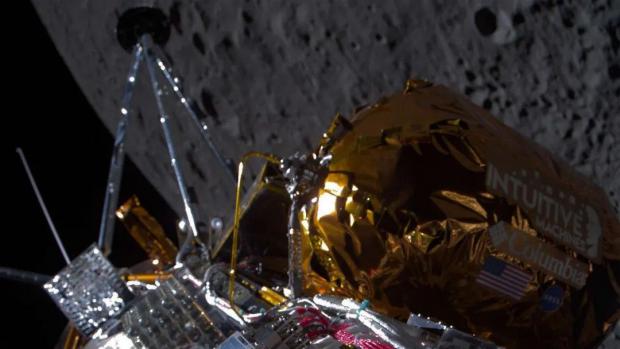
Breaking News
 Mike Benz just examined Epstein files and he's got a telltale theory…
Mike Benz just examined Epstein files and he's got a telltale theory…
 BREAKING GLOBAL EXCLUSIVE: Former High-Level CIA Operative Patrick Byrne Reveals That...
BREAKING GLOBAL EXCLUSIVE: Former High-Level CIA Operative Patrick Byrne Reveals That...
 Junk-food Bans for SNAP Users To Begin in January
Junk-food Bans for SNAP Users To Begin in January
Top Tech News
 EngineAI T800: Born to Disrupt! #EngineAI #robotics #newtechnology #newproduct
EngineAI T800: Born to Disrupt! #EngineAI #robotics #newtechnology #newproduct
 This Silicon Anode Breakthrough Could Mark A Turning Point For EV Batteries [Update]
This Silicon Anode Breakthrough Could Mark A Turning Point For EV Batteries [Update]
 Travel gadget promises to dry and iron your clothes – totally hands-free
Travel gadget promises to dry and iron your clothes – totally hands-free
 Perfect Aircrete, Kitchen Ingredients.
Perfect Aircrete, Kitchen Ingredients.
 Futuristic pixel-raising display lets you feel what's onscreen
Futuristic pixel-raising display lets you feel what's onscreen
 Cutting-Edge Facility Generates Pure Water and Hydrogen Fuel from Seawater for Mere Pennies
Cutting-Edge Facility Generates Pure Water and Hydrogen Fuel from Seawater for Mere Pennies
 This tiny dev board is packed with features for ambitious makers
This tiny dev board is packed with features for ambitious makers
 Scientists Discover Gel to Regrow Tooth Enamel
Scientists Discover Gel to Regrow Tooth Enamel
 Vitamin C and Dandelion Root Killing Cancer Cells -- as Former CDC Director Calls for COVID-19...
Vitamin C and Dandelion Root Killing Cancer Cells -- as Former CDC Director Calls for COVID-19...
 Galactic Brain: US firm plans space-based data centers, power grid to challenge China
Galactic Brain: US firm plans space-based data centers, power grid to challenge China
'Welcome to the moon': How Odysseus 'aced the landing of a lifetime' as it touched d

A privately built spacecraft has landed safely on the moon, marking the first time the US has reached the lunar surface since the end of the Apollo era 50 years ago.
Odysseus, a $118 million uncrewed lander built by Intuitive Machines, made a soft landing near the moon's south pole at 6:24pm ET last night.
During its 73-minute descent, Odysseus, or Oddie, slowed down from speeds of 4,000mph (6,500kph) to make a soft landing in an area pockmarked with craters.
However, the mission nearly ended in failure when the craft was forced to switch to an experimental navigation system mid-landing.
'I know this was a nail-biter, but we are on the on the surface, and we are transmitting. Welcome to the moon,' said Intuitive Machines CEO Steve Altemus.
Six days ago, Oddyseus was launched on a SpaceX Falcon 9 rocket from NASA's Kennedy Space Center in Cape Canaveral, Florida.
The uncrewed craft had been circling the moon about 57 miles above the surface since reaching orbit on Wednesday.
Odie remained 'in excellent health' as it continued to orbit the moon, roughly 239,000 miles from Earth, transmitting flight data and lunar images to Intuitive Machines' mission control center in Houston, the company said on Wednesday.
But, as it moved into the final stages of the operation, Oddie's handlers discovered that the laser range-finders weren't working.
This vital system is what allows the craft to determine how far it is above the lunar surface and can make the difference between a soft landing and a crash.
Using a last-minute software patch the engineers were able to convert NASA's experimental Navigation Doppler Lidar, which was being carried in the payload, to take on the job.
At 6:11pm EST, Odysseus fired its engine for the crucial 11-minute burn, decelerating from 4,000mph (6,500kph) to just 2.2mph (3.5kph), 33ft above the surface.
Having slowed its fall, Oddie landed safely on the rim of the giant Malapert A crater about 190 miles (300km) north of the moon's South Pole.
After 15 tense minutes, the crew back on Earth finally received Oddie's signal, confirming that the landing had been a success.

 The Ever-Widening War
The Ever-Widening War

